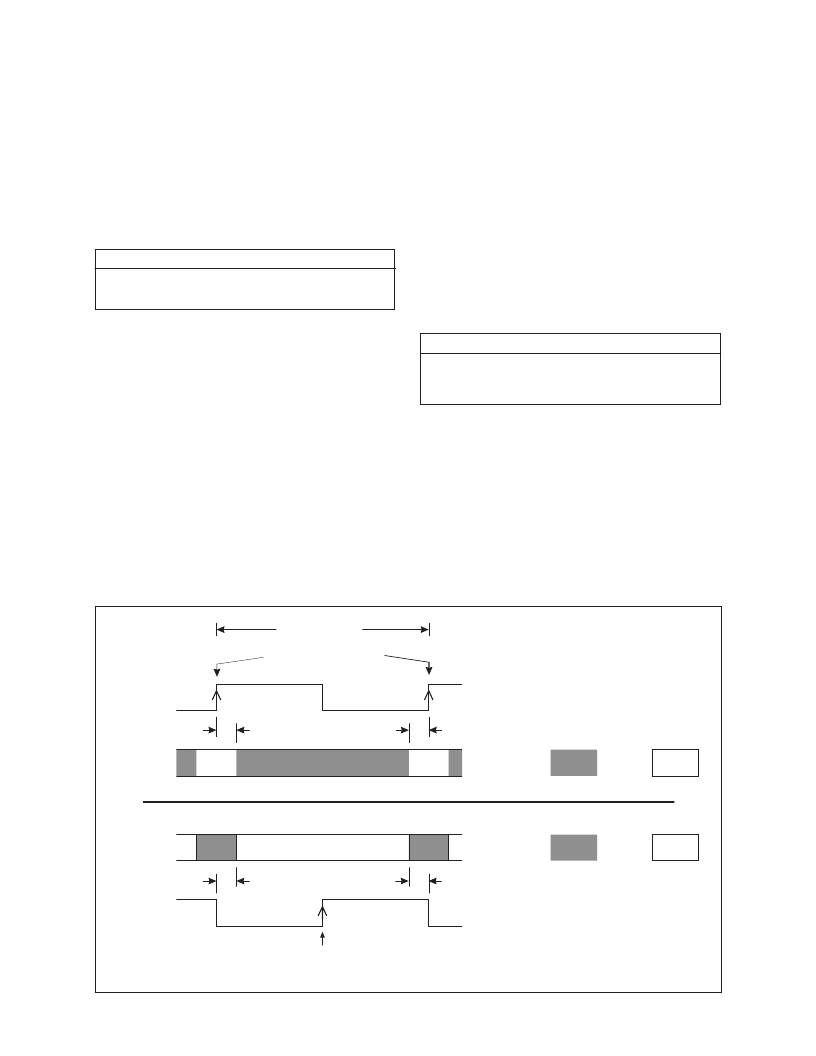- 您現(xiàn)在的位置:買賣IC網(wǎng) > PDF目錄382972 > FX489 (Electronic Theatre Controls, Inc.) GMSK Modem PDF資料下載
參數(shù)資料
| 型號: | FX489 |
| 廠商: | Electronic Theatre Controls, Inc. |
| 英文描述: | GMSK Modem |
| 中文描述: | GMSK調(diào)制解調(diào)器 |
| 文件頁數(shù): | 9/12頁 |
| 文件大?。?/td> | 106K |
| 代理商: | FX489 |

9
Application Information ......
Tx Signal Path Description
The binary data applied to the ‘Tx Data’ input is
retimed within the chip on each rising edge of the ‘Tx
Clock’ and then converted to a 1-volt peak-to-peak
binary signal centred about V
.
If the ‘Tx Enable’ input is ‘high,’ then this internal
binary signal will be connected to the input of the
lowpass Tx Filter, and the output of the filter connected
to the ‘Tx Out’ pin.
data bit-rate (BT).
Note that an external RC network is required
between the ‘Tx Out’ pin and the input to the
Frequency Modulator (see Figures 2 and 3). This
network, which can form part of any d.c. level shifting
and gain adjustment circuitry, forms an important part
of the transmit signal filtering, and the ground
connection to the capacitor C
should be positioned to
give maximum attenuation of high-frequency noise into
the modulator.
The component values should be chosen so that
the product of the resistance (Ohms) and the
capacitance (Farads) is:
BT of 0.3 = 0.34/bit rate (bits/second)
BT of 0.5 = 0.22/bit rate (bits/second)
with suitable values for common bit rates being:
R
C
8000 bits/sec, BT = 0.3
4800 bits/sec, BT = 0.5
9600 bits/sec, BT = 0.5
91.0k
100k
47.0k
470pF
470pF
470pF
The signal at ‘Tx Out’ is centred around V
, going
positive for logic “1” (high) level inputs to the ‘Tx Data’
input and negative for logic “0” (low) inputs.
When the transmit circuits are put into a
‘powersave’ mode (by a logic “1” to the ‘Tx PS’ pin) the
output voltage of the Tx Filter will go to V
.
When power is subsequently restored to the Tx Filter,
its output will take several bit-times to settle. The ‘Tx
Enable’ input can be used to prevent these abnormal
voltages from appearing at the ‘Tx Out’ pin.
A ‘low’ input to the ‘Tx Enable’ will connect the input of
the Tx Filter to V
, and disconnect the ‘Tx Out’ pin
from the filter, connecting it instead to V
BIAS
through a
high resistance (nominally 500k
).
The Tx Filter has a lowpass frequency response,
which is approximately gaussian in shape as shown in
Figure 9, to minimise amplitude and phase distortion of
the binary signal while providing sufficient attenuation
of the high frequency-components which would
otherwise cause interference into adjacent radio
channels. The actual filter bandwidth to be used in any
particular application will be determined by the overall
system requirements. The attenuation-vs-frequency
response of the transmit filtering provided by the
FX489 have been designed to meet the specifications
for most GMSK modem systems, having a -3dB
bandwidth switchable between 0.3 and 0.5 times the
Tx Enable
Tx Filter Input
Tx Out Pin
‘1’ (high)
“0” (low)
1 volt p-p Data In
V
BIAS
Filtered Data
V
BIAS
via 500k
1 BIT PERIOD
1.0μS Min.
1.0μS Min.
1.0μS Max.
1.0μS Max.
Tx DATA SAMPLED BY
THE FX489 AT THESE
INSTANCES
Tx Data
Rx Data
Rx Clock
Tx Clock
DON’T CARE
DATA INVALID
DATA VALID
DATA MUST
BE VALID
EXTERNAL CIRCUITS SHOULD
SAMPLE Rx DATA AT THIS TIME
Tx CLOCK AND Rx CLOCK OUTPUTS
(MARK/SPACE)
DUTY CYCLE NOMINALLY 50%
Fig.8 Rx and Tx Clock Data Timings
相關PDF資料 |
PDF描述 |
|---|---|
| FX489DW | GMSK Modem |
| FX489P | GMSK Modem |
| FX501 | High-Current Switching Applications |
| FX502 | High-Current Switching Applications |
| FX504 | High-Current Switching Applications |
相關代理商/技術參數(shù) |
參數(shù)描述 |
|---|---|
| FX489DW | 制造商:未知廠家 制造商全稱:未知廠家 功能描述:GMSK Modem |
| FX489P | 制造商:未知廠家 制造商全稱:未知廠家 功能描述:GMSK Modem |
| FX4A1-20P-1.27SV | 制造商:HRS 制造商全稱:HRS 功能描述:Stacking Height 5 to 11mm Half Pitch Connector |
| FX4A1-20P-1.27SV(71) | 功能描述:板對板與夾層連接器 20P STRT SMT HEADER NO LOC BOSS GLD PLT RoHS:否 制造商:JAE Electronics 系列:WP3 產(chǎn)品類型:Receptacles 節(jié)距:0.4 mm 疊放高度:1 mm 安裝角: 位置/觸點數(shù)量:50 排數(shù):2 外殼材料:Plastic 觸點材料:Copper Alloy 觸點電鍍:Gold 電壓額定值:50 V 電流額定值:0.4 A |
| FX4A1-20P-1.27SV(99) | 功能描述:板對板與夾層連接器 20P STRT SMT HEADER NO LOC BOSS GLD PLT RoHS:否 制造商:JAE Electronics 系列:WP3 產(chǎn)品類型:Receptacles 節(jié)距:0.4 mm 疊放高度:1 mm 安裝角: 位置/觸點數(shù)量:50 排數(shù):2 外殼材料:Plastic 觸點材料:Copper Alloy 觸點電鍍:Gold 電壓額定值:50 V 電流額定值:0.4 A |
發(fā)布緊急采購,3分鐘左右您將得到回復。